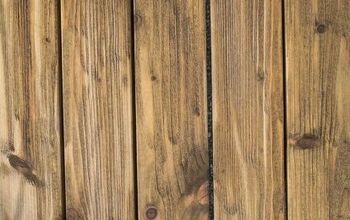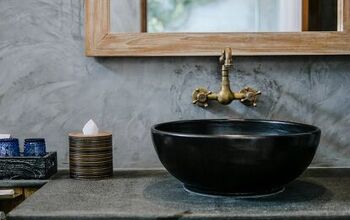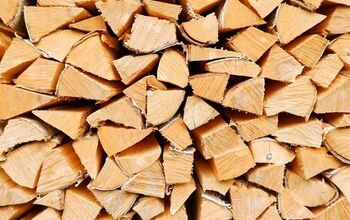Can You Use Lysol On Wood? (Find Out Now!)

Wood floors can offer a lot as a counterpoint to carpeting. For one, hardwood floors can seriously decrease the amount of dust and other allergens in your home. Not only that but having hardwood floors can even add to the value of your home.
Keeping them clean is another story. Lysol is a common cleaner that you can find on most grocery store shelves. But can it be used on hardwood floors? Though Lysol states that you can use it as a standalone cleaner, most experts recommend that you use it mixed with water. Lysol on its own can potentially damage older wood.
Do You Need a Maid Service?
Get free, zero-commitment quotes from pro contractors near you.

Cleaning Hardwood Floors
With carpeting, you would need to vacuum in order to suck up all of the dust, dirt, and other allergens that can live within the fibers. But with hardwood floors, that problem doesn’t exist. It is part of the reason why hardwood flooring is often preferred to carpeting.
While you can vacuum hardwood, it is not the most effective method of cleaning hardwood flooring. You need some kind of specific cleaner or a mixture that of a household cleaner and water. Mopping the surface of the hardwood floor should effectively clean it of any contaminants, dirt, and dust that does gather on the floor.
A Note About Lysol
While Lysol itself says that you can use their products on hardwood flooring, there is one caveat. The age and condition of your hardwood flooring matter. Also, it is important to know that laminate is fine to use Lysol on as it is not true hardwood.
The reason age and condition matter is that Lysol has been known to damage older wood. So, if your home has truly antique flooring, you would want to go with something that is not as harsh as Lysol can be in this situation.
Other Methods for Cleaning Hardwood Flooring
Maybe you don’t feel quite comfortable enough in Lysol to apply it to your flooring. So, what other solutions are there? Thankfully, there are three methods in particular that have proven to be effective, though one of them is to be taken with a side of caution.
Wood Floor Cleaner
There are plenty of options out there when it comes to cleaning products specifically made for cleaning hardwood flooring. Find a cleaner that has been specifically crafted to clean, not damage, hardwood flooring.
For those who are not a fan of harsh chemicals, you can find plenty of naturally made cleaners out there. That means being safe to use in homes that have pets or children, too.
Vinegar Mixture
White vinegar is one of the most versatile cleaning agents out there and everyone should have some in their home. Mixed with a little bit of water and it can become an effective cleaner of just about any surface.
Not only is a vinegar mixture a great way to clean your floors, but it is one of the safest methods too. You know that there are no harsh chemicals within that could damage the finish of your flooring. So long as it is cut with the right amount of water, you can rest assured that it will get the job done.
Steam Cleaning
This method is met with a huge difference in opinion. Steam clean is definitely an effective way to keep your flooring clean. That said, there are important factors to keep in mind before starting. Know how hot the cleaner gets and pay attention to the amount of water left behind.
The heat can potentially warp laminate if it is too strong. Water, meanwhile, can gather beneath the laminate or wood surfaces. That can, in turn, lead to rot and warping. Still, it is an effective method of cleaning floors and decontaminating them.
How to Clean Hardwood Floors Using Lysol
So, let’s say that you decided to go with Lysol as your cleaning agent. The multi-surface cleaner is like to be the best option that you can go with. The key is to make sure that you have the right mixture of Lysol and water and to follow the proper steps.
Step 1: Sweep and Vacuum
Any time that you are cleaning hardwood floors, do yourself a favor by sweeping and vacuuming to start. Even if you can’t notice clumps of dust and dirt, that does not mean that it is not there.
Mopping over dusty, dirty areas has two consequences. For one, it isn’t cleaning and you are just mucking up your clean water. For two, depending on the hardness of the dirt and dust, you could be leaving small scratches in the surface of the wood as you move back and forth.
Step 2: Using Lysol
There are two ways that you can Lysol: at full-strength or diluted by warm water. Depending on the age and condition of your flooring, you may be better off diluting the cleaner with warm water in a bucket.
If you do dilute it, use about ¼-cup of Lysol for every gallon of warm water that you use. Lysol recommends using it at full strength to get rid of greasy and caked-on soils but assess the condition of your flooring first.
Step 2: Wring Your Mop
Remember that we want to clean, not leave puddles in our wake. When you place your mop in the bucket, make sure to wring it out thoroughly before applying it to the floor. Too much water can be harmful to wooden floors and even foster mold growth.
Work from one end of the room to the other, moving backward. This way, you don’t have to stand in the spots that you have just mopped. Continue until you get to the edges of the room and do your best to cover every last spot.
Step 3: Removal
You can either remove the cleaner immediately or leave it on to sanitize. If you are sanitizing, then leave it on for a minute before using a clean mop to wipe it away. Should you just be looking to clean your hardwood floors, then wipe away immediately using a clean mop.
You can follow a similar technique as step 2 for wiping everything away. Make sure that the floor is as dry as possible before your finish for the reasons mentioned above.
Do You Need a Maid Service?
Get free, zero-commitment quotes from pro contractors near you.

Related Questions
We now know that, yes, you can use Lysol to clean hardwood floors though there are reasons you might not want to use it. What other questions do you have regarding Lysol and their cleaning products? Here are the relevant questions.
What Surfaces Can You Use Lysol on?There are myriad Lysol cleaning products that you can use. There are generally six accepted surfaces that you should be using the spray on. Those six surfaces include any bathroom surfaces, kitchen counters, door handles, children’s toys, electronics, and furniture.
While you may be able to use it on other surfaces – like your floor – it is generally accepted that you avoid doing so. There are cleaners and disinfectant sprays that are better suited for those specific surfaces. Depending on the age of those surfaces, you may wind up doing damage to them with the Lysol spray.
You would generally want to go with a homemade mixture for disinfecting purposes, although some Lysol floor cleaners have that capability as well.
Related Articles

Ryan Womeldorf has more than a decade of experience writing. He loves to blog about construction, plumbing, and other home topics. Ryan also loves hockey and a lifelong Buffalo sports fan.
More by Ryan Womeldorf



























